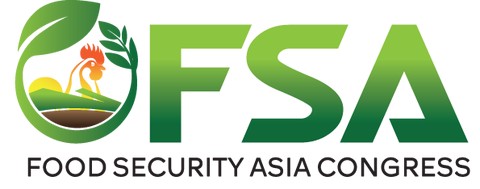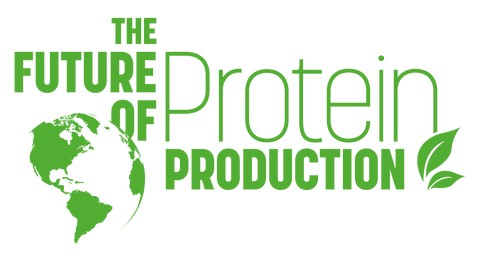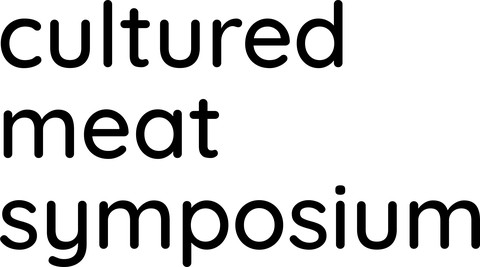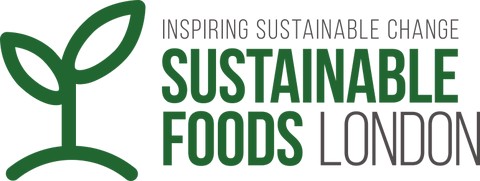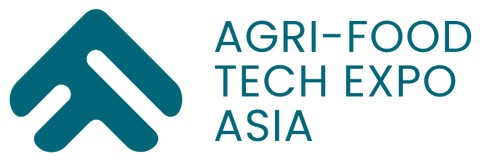Innovative Cellular Agriculture Technique to Produce Real Taste and Texture in Cultured Meat
November 3, 2021 - 12 min read
This essay is third-place winner of the Student Essay Contest 2021. Rahul Harshath Elangovan is a master’s degree student in the Department of Food Science at the University of Melbourne.
Introduction
Cellular agriculture is an innovative solution where the agricultural products are manufactured at the cellular level that is similar to the traditional agricultural products. Cellular agriculture is considered to be the more sustainable and environmentally friendly method due to its ability to emit fewer greenhouse gases and require less water and fewer land resources than traditional agriculture practices (Eibl et al., 2021). But there are still numerous challenges for cellular agriculture like obtaining tissues with similar texture, media optimization, etc., Addressing these challenges and finding promising solutions is the need of the hour.
One of the issues with cellular agriculture comes in the field of cultivating meat. Many academic and industrial researchers are working to improve the meat quality that is produced by cellular agriculture technology. The structure and thickness of the cultured meat are important factors that have garnered the attention of the global cell-based pioneers. As a food technologist with a biotechnology background, my interest also lies in culturing and harvesting cells to develop cultured meat that is at par with conventional meat in terms of sensory attributes. One of the major issues in cell cultivation that hinders providing textured meat tissues is the increased accumulation of lactate that has been proved to be deleterious for the cultured tissues. The accumulation of lactate in the media changes the pH of the cell medium, turning the medium into a hostile environment for the cells. This essay focuses on the potential solution to improve cultured tissue quality by reducing tissue damage — a co-culture system where the tissues are cultivated along with microalgae.
Our issue of focus
One of the most important components of meat is its characteristic texture that provides the taste to the consumers. The texture of the meat tissues influences the “mouthfeel” provided by the meat. The texture of the meat tissue should be thick enough to not crumble while cooking and should be tender enough to provide the mouthfeel and flavor (Arshad et al., 2018). To obtain a similar texture in cultivated meat, three-dimensional (3D) tissue fabrication is being utilized. Currently, in-vitro cultivation of tissue with a thickness of more than 50 μm without the capillary networks seems to be a distant goal that needs to be achieved to impart the livestock meat-like texture (Haraguchi & Shimizu, 2021). This is due to the lack of vascularization in cultured meat. In conventional meat, the presence of blood vessels facilitates the transfer of nutrients and oxygen to the cells to promote the growth of healthy tissues. A lack of blood vessels hinders the efficient transfer of nutrients and oxygen to cells that are present in the deep of thick tissues, thereby causing cell death. Modification in the tissue culture system can provide a potential solution to achieve the texture by developing thicker tissues without the vascular system.
Introduction to Tissue Engineering
Tissue engineering is an interdisciplinary field where the concepts of engineering and life sciences are utilized for the development of substitute biological tissues that function similarly to the natural tissues (Carletti, Motta, & Migliaresi, 2011). Cell-based meat is meat tissues that are cultivated in a controlled environment that mimics the natural environment of the animal body. In order to mimic the animal body environment, we need four important inputs, namely:
- Cell Source
- Cell Culture Media
- Bioreactor
- Scaffold
The culture media, bioreactor, and the scaffold design are decided based on the type of cell source and the type of cells that has to be cultivated (“Lab Grown Meat — Everything You Need to Know About Cultured Meat”, n.d.). Figure 1 illustrates the process involved in the cultivated meat production.
Fig. 1. Graphic of Cultured Meat Production (Djisalov et al., 2021)
For the cells to grow in vitro, we need to provide the required nutrients through the growth media. The growth media should essentially contain all the nutrients that the cells get inside an animal’s body. The components of the growth media are:
- Carbohydrates
- Amino acids
- Fats
- Vitamins
- Minerals
- Growth stimuli (signaling molecules)
With these molecules present in the right proportion, the growth media nurtures the cells to grow and promotes the cells to differentiate into different types of cells that make up the end product meat (O’Neill, Cosenza, Baar, & Block, 2021).
With the nutrients provided via growth media, the cells proliferate within a bioreactor. To obtain thicker and structured meat-like tissues, the cells need to be transferred into suitable scaffolds. The role of scaffolds is to promote three-dimensional cell growth with continuous perfusion to the growth media. Selection of the suitable scaffold depends on various factors such as mechanical properties, porosity, biocompatibility, etc., (“Cultivated meat scaffolding | Deep dive | GFI”, n.d.).
Following the growth in scaffolds, the cultivated meat gets harvested. At the harvesting stage, the cultivated meat looks no different from the conventional meat. But, cultivated meat takes less time to produce the meat than the conventional one, thanks to cellular agriculture technology. Figure 2 shows the difference between the cellular agriculture method and the animal agriculture method for producing the same end product - meat.
Fig.2. The difference in process between Cellular Agriculture and Animal Agriculture (How Is Cultivated Meat Made?, 2021)
Reason for Tissue Damage
Tissue formation metabolism involves a complex chemical reaction that requires adequate energy. The growth media is packed full of nutrients for energy provision to the cells to successfully carry out the tissue formation process. The growth media is usually rich in glucose and glutamine, compounds that are mandatory to achieve rapid cell growth. The cultured cells feed on glucose rapidly for their growth (Buchsteiner, Quek, Gray, & Nielsen, 2018). This is considered an inefficient process because of the low amount of energy obtained per glucose molecule consumed. The energy transfer ratio is 2:1 (2 moles of energy compound for one mole of glucose consumed), which is not efficient for culturing cells (Venkatesh, Darunte, & Bhat, 2013). This is also known as the “Warburg Effect”, where the increased glucose consumption by the cells leads to the increase in the accumulation of lactate, a toxic metabolic waste that damages the cells. Figure 3 shows the Warburg effect pathway.
Fig.3. Schematic Representation of the Warburg Effect (Venkatesh et al., 2013)
Studies have shown that the increased accumulation of lactate affects the pH of the media, thereby leading to a hostile environment for the cultivated cells. In addition to the detrimental effect of lactate, accumulation of ammonia is also considered to impart cell damage. Cells utilize glutamine present in the growth media not only for the biosynthetic pathways of purine and pyrimidine synthesis but also as a major energy source. Cells utilize glutamine for their metabolism leaving behind ammonia as the metabolic waste (Schneider, Marison, & Von Stockar, 1996).
The accumulation of these two metabolic wastes in the media increases the toxicity of the media and causes tissue damage. To overcome the increased accumulation of lactate, the cells die and release an enzyme called Lactate Dehydrogenase (LDH), which converts lactate into pyruvate (Legrand et al., 1992).
Proposed Solution – “Co-culture system”
Microalgae are autotrophic microorganisms that utilize carbon-di-oxide and nitrogen compounds and excretes oxygen during the photosynthesis process. They can be considered as “miniature plants” as they also use the photosynthesis process for producing valuable biocomponents. With this background, Haraguchi et al., (2017) conducted an innovative study where the mammalian cells C2C12 and Rat Cardiac Cell sheet are co-cultured along with microalgae, Chlorococcum littorale. Co-culture is a system where the mammalian cells and the microalgae are cultured in the same dish, as they proceed to grow and live by having close interaction with each other. This study shows that the co-culture system of mammalian cells and microalgae exhibits a symbiotic relationship, where the oxygen excreted by the microalgae got utilized by the mammalian cells and in turn, the microalgae utilize the mammalian metabolic waste – carbon-di-oxide and ammonia, for their photosynthetic process. In simple terms, the waste excreted by microalgae is utilized by the mammalian cells as a nutrient source and vice-versa for the microalgal cells. This efficient usage of waste metabolites has facilitated the mammalian cells to consume less glucose from the media, thereby reducing the lactate accumulation, which we discussed as toxic for the mammalian cells. Hence, the co-culture system has shown promising results by reduced cell damage (Haraguchi et al., 2017). Reduction of cell damage facilitates the cultivation of thicker cells that can be further processed to obtain the exact meat-like texture and therefore, achieve the meat-like sensory attributes like mouthfeel, flavor, taste, etc., Figure 4 illustrates the co-culture system used for the study.
Fig.4. Co-culture system with microalgae and mammalian cells (Haraguchi et al., 2017)
3-D Tissue Fabrication
Haraguchi et al., (2021) conducted a study using the co-culture system where mammalian cell C2C12 and microalgae, Chlorella vulgaris, were cultivated to produce thicker cells. In that study, they found that the release of lactate dehydrogenase has been reduced to one-seventh compared to the normal mammalian cell cultivation. This means the cultivation of thicker cells with improved cell damage is possible via the co-culture system. Cultivation of thicker cells using animal cells alone leads to tissue damage due to the accumulation of toxic metabolic wastes like lactate. But the co-culture system has shown improved efficiency for fabricating thicker cells of 200-400 μm without incurring major tissue damage. This can be a potential tool for producing thicker and nutrient-rich cultured food (Haraguchi & Shimizu, 2021). Thicker tissues provide better texture when subjected to the 3D fabrication process. Figure 5 displays the increased cell thickness produced by the co-culture system.
Recombinant Microalgae
A study by Haraguchi et al., (2021) shows that the co-culture system shows reduced LDH production when the cells are cultivated at 30°C. At 37°C, the LDH production seems to be high due to the increased cell damage. As we have discussed earlier, the increase in lactate accumulation triggers the LDH release from the tissues by altering the pH of the media. To convert the lactate into pyruvate without damaging the cells, we propose the solution of making the microalgae release the LDH by recombinant technology (Valvona, Fillmore, Nunn, & Pilkington, 2016).
Isolation of the gene LDH-A, which produces the LDH enzyme, from the mammalian cells and transferring it to the microalgal cells can be achieved via numerous methods like electroporation, Agrobacterium tumefaciens – mediated, particle bombardment, etc., Microalgal chloroplast genomes have been proven to be efficient for the expression of foreign proteins (Potvin & Zhang, 2010), in our case, it is the LDH enzyme. This entire process is similar to the production of soy leghemoglobin produced by the Impossible for their burgers, but instead of soy leghemoglobin, we aim at producing LDH enzyme.
This can be a potential solution as the co-culture system has already been proved to be efficient for thicker tissue fabrication. In times of increased lactate accumulation, the microalgae will release the LDH in response to maintain the pH, thereby keeping the environment in the medium intact that is suitable for the growth of healthier tissues.
Intact thicker cells then can be harvested and processed to provide the necessary texture to provide the sensory needs that consumers expect from meat. The proposed solution aims at eliminating the toxic wastes that affect the tissues, thereby providing healthy tissues that exactly replicate the animal tissues in terms of texture and taste.
Conclusion
Cellular agriculture is an innovative field that comes with promising solutions for the global problems that we are facing currently. As an innovative field, it also possesses challenges that need to be solved by scientific work. The proposed solution of the co-culture system where the symbiotic relationship between the mammalian cells and the microalgal cells are achieved shows promising results that it can be used as a tool for fabricating thick and nutrient-rich cultivated meat. This could advance the rate of cellular meat cultivation to enter the consumer market soon.
References
Arshad, M. S., Sohaib, M., Ahmad, R. S., Nadeem, M. T., Imran, A., Arshad, M. U., … Amjad, Z. (2018). Ruminant meat flavor influenced by different factors with special reference to fatty acids. Lipids in health and disease, 17(1), 1-13.
Buchsteiner, M., Quek, L. E., Gray, P., & Nielsen, L. K. (2018). Improving culture performance and antibody production in CHO cell culture processes by reducing the Warburg effect. Biotechnology and bioengineering, 115(9), 2315-2327.
Carletti, E., Motta, A., & Migliaresi, C. (2011). Scaffolds for tissue engineering and 3D cell culture. 3D cell culture, 17-39.
Cultivated meat scaffolding | Deep dive | GFI. Retrieved 29 August 2021, from <https://gfi.org/science/the-science-of-cultivated-meat/deep-dive-cultiv…;
Djisalov, M., Knežić, T., Podunavac, I., Živojević, K., Radonic, V., Knežević, N. Ž., … Gadjanski, I. (2021). Cultivating Multidisciplinarity: Manufacturing and Sensing Challenges in Cultured Meat Production. Biology, 10(3), 204.
Eibl, R., Senn, Y., Gubser, G., Jossen, V., van den Bos, C., & Eibl, D. (2021). Cellular Agriculture: Opportunities and Challenges. Annual Review of Food Science and Technology, 12, 51-73.
Haraguchi, Y., Kagawa, Y., Sakaguchi, K., Matsuura, K., Shimizu, T., & Okano, T. (2017). Thicker three-dimensional tissue from a “symbiotic recycling system” combining mammalian cells and algae. Scientific reports, 7(1), 1-10.
Haraguchi, Y., & Shimizu, T. (2021). Three-dimensional tissue fabrication system by co-culture of microalgae and animal cells for production of thicker and healthy cultured food. Biotechnology letters, 43(6), 1117-1129. How Is Cultivated Meat Made?. (2021). Retrieved 29 August 2021, from <https://www.whatiscultivatedmeat.com/process%3E;
Lab Grown Meat — Everything You Need to Know About Cultured Meat. Retrieved 29 August 2021, from <https://cellbasedtech.com/lab-grown-meat%3E;
Legrand, C., Bour, J., Jacob, C., Capiaumont, J., Martial, A., Marc, A., … Duval, D. (1992). Lactate dehydrogenase (LDH) activity of the number of dead cells in the medium of cultured eukaryotic cells as marker. Journal of biotechnology, 25(3), 231-243.
O’Neill, E. N., Cosenza, Z. A., Baar, K., & Block, D. E. (2021). Considerations for the development of cost‐effective cell culture media for cultivated meat production. Comprehensive Reviews in Food Science and Food Safety, 20(1), 686-709.
Potvin, G., & Zhang, Z. (2010). Strategies for high-level recombinant protein expression in transgenic microalgae: a review. Biotechnology advances, 28(6), 910-918.
Schneider, M., Marison, I. W., & Von Stockar, U. (1996). The importance of ammonia in mammalian cell culture. Journal of biotechnology, 46(3), 161-185.
Valvona, C. J., Fillmore, H. L., Nunn, P. B., & Pilkington, G. J. (2016). The regulation and function of lactate dehydrogenase a: therapeutic potential in brain tumor. Brain pathology, 26(1), 3-17.
Venkatesh, K. V., Darunte, L., & Bhat, P. J. (2013). Warburg Effect. In W. Dubitzky, O. Wolkenhauer, K.-H. Cho, & H. Yokota (Eds.), Encyclopedia of Systems Biology (pp. 2349-2350). New York, NY: Springer New York.


